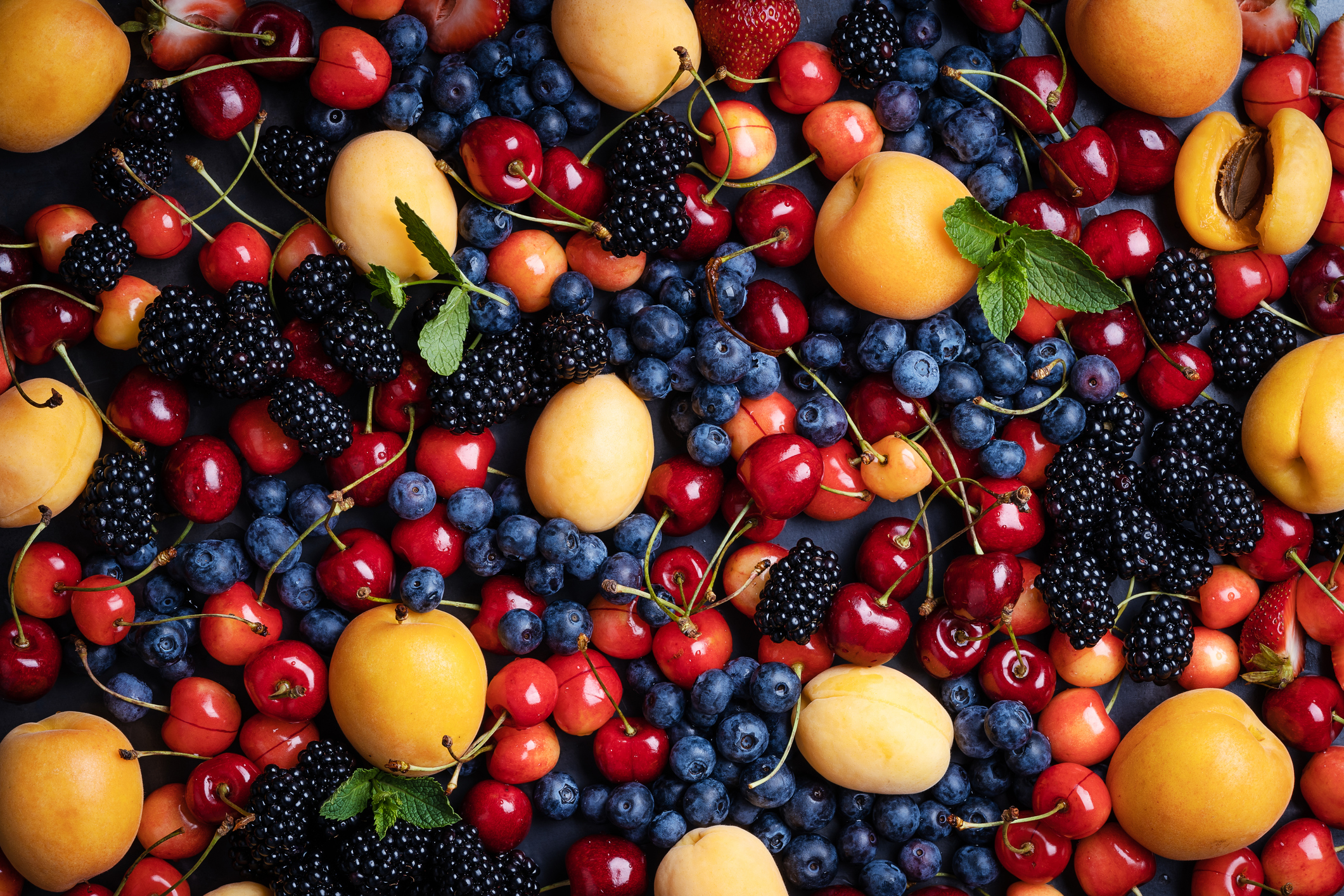There’s no point beating around the “bush.” The answer is yes, berries do reduce inflammation. But their anti-inflammatory properties are just one part of what makes them such incredible foods.
What is a berry, anyway?
We all think we know a berry when we see one (especially since they often have the word “berry” right in their names), but botanists define berries a little bit differently than the rest of us. In the botany world, a berry is a fruit that contains both flesh and seeds and that comes from a single flower. So while blueberries, gooseberries, and cranberries are all true berries, lots of the fruits we usually think of as berries, such as strawberries and blackberries, are “aggregate fruits,” not berries. And many fruits we don’t think of as berries actually are, such as bananas, avocadoes, grapes, and pineapples.
But botanical definitions aren’t that important when it comes to nutrition. For the purposes of this article, we’ll use “berry” to refer to any of the small, fleshy, edible fruits colloquially referred to that way. As it happens, those little fruits have a lot in common when it comes to nutrition, and that includes a high likelihood that they’ll possess anti-inflammatory properties.
A rainbow of colors
The USDA urges women 50 and older to eat at least one cup of fruit per day, and men of the same age to eat two (Since most people don’t think of fruit consumption in terms of cups, it’s helpful to know that a cup of fruit equals a small apple, medium pear, large orange, or large banana). Berries are a great way to get your daily fruit consumption, since they’re not only delicious but also versatile. You can eat them by the handful, on toast, over your cereal, in yogurt, and on and on.
Berries are also a great way to add color variety to your diet. Nutritionists suggest using color as a quick visual shorthand for food variety. By eating a colorful palette of plant foods daily, you can ensure that you’re providing yourself with a variety of nutrients.
Part of the reason for this advice to strive for a daily rainbow is that fruits (including berries) derive their colors from compounds that offer plants protection from environmental threats. These substances, called phytochemicals, are what make plums purple, blackberries black, and oranges orange. They also protect us by fighting inflammation and oxidative stress. By eating fruits and vegetables of a variety of colors, you’re consuming a broad array of phytochemicals and thus diversifying their protective effects.
Phytochemicals in berries
Berries are highly nutritious. They make a good source of fiber, they’re packed with such nutrients as potassium, magnesium, and vitamin C, and they contain those phytochemicals that lower inflammation and reduce oxidative stress. While other fruits and vegetables also contain beneficial phytochemicals, berries are particularly rich in them. Unsurprisingly, then, eating berries has been linked to numerous health benefits, including improved vision, better cognition, and lower risk of diabetes, cancer, and cardiovascular disease.
Antioxidants in berries
While some of the phytochemicals in berries are anti-inflammatory, some are antioxidant, which means they help lower or prevent oxidative stress. Oxidative stress occurs when the body produces too many metabolic byproducts called free radicals, which can damage or kill cells. Antioxidants essentially hunt down those free radicals, stabilizing them to limit their damage.
Blueberries
Blueberries are often hailed as a superfood, thanks in large part to their phytochemical content, especially a subgroup of phytochemicals called polyphenols, which are of particular importance to researchers. Among the health benefits directly linked to blueberry consumption are improved cognition and motor control, through anti-inflammatory action that boosts signaling functions in the brain.
In a placebo-controlled study of 61 older adults conducted in 2023 wild blueberry powder was associated with healthier blood vessels, lower blood pressure, and better cognitive function than the placebo group.
Cranberries
It’s a shame that these berries have been typecast as Thanksgiving food, both because their tart flavor is so delicious and because they’re so nutritious. Likely due to their phytochemicals called flavonoids, cranberries can help prevent urinary tract infections, and they’ve been associated with decreased cardiovascular risk, especially in men. And in a 2022 study, 12 weeks of cranberry supplementation was linked to improved episodic memory, perhaps due to increased blood flow to the brain. Participants in the cranberry group also saw a significant drop in their LDL (“bad”) cholesterol.
Blackberries
A summertime favorite, blackberries are rich in antioxidant polyphenols called anthocyanins, which are known to be anti-inflammatory. Anthocyanins have been found to play a role in the prevention of several diseases.
In a 150-person placebo study, anthocyanins were found to reduce levels of a biomarker for inflammation while lowering subjects’ cholesterol.
And anthocyanins may even slow the growth of cancer cells and prevent tumors from becoming cancerous.
Raspberries
Rich in fiber, manganese, potassium, and other vitamins and minerals, raspberries also happen to be one of the best sources of antioxidants including the flavonoids lutein, beta carotene, and zeaxanthin. Their anti-inflammatory properties may reduce risk of Alzheimer’s and arthritis, as well as cardiovascular disease. A 2017 study provides strong evidence that raspberries protect brain cells from oxidative stress.
Strawberries
Strawberries are so delicious that it’s hard to believe they’re good for you. But they sure are. As with all the other berries on this list, strawberries boast a number of nutritional components including vitamins, minerals, and ant-inflammatory compounds. They’re an especially good source of folic acid, crucial for healthy cell function and tissue growth.
Strawberry consumption has been linked to a 34% lower risk of developing Alzheimer’s Disease. Other studies have found strawberries to help lower cholesterol and other markers of cardiovascular risk.


